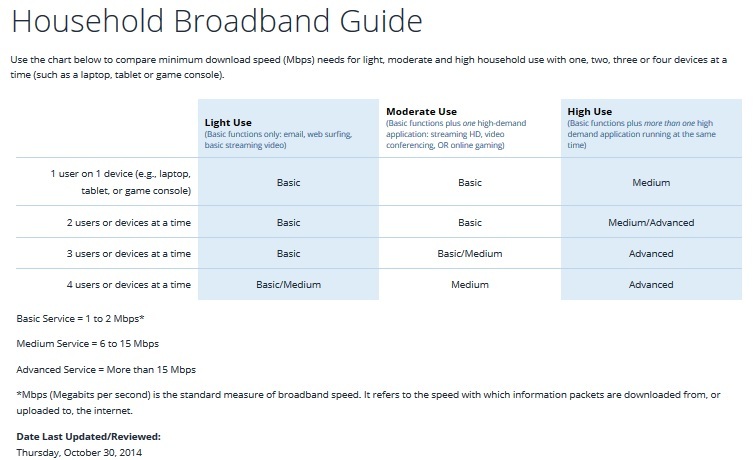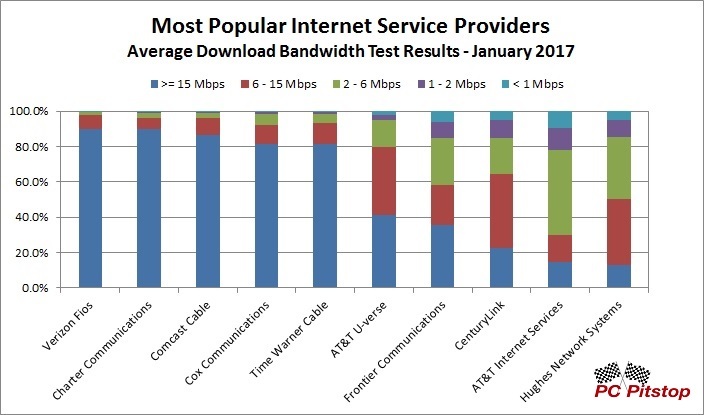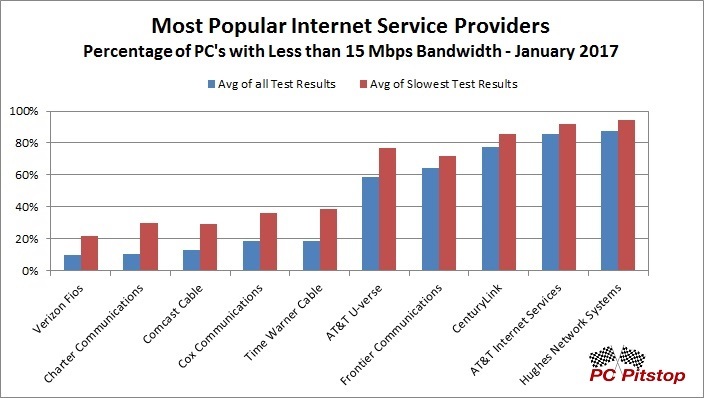Is your internet service provider (ISP) giving you the bandwidth you’re paying for? How much bandwidth does the average household need? The use of internet for downloading music and video and other uses has exploded during recent years. More devices, such as smart TVs, game consoles and some household appliances are now making use of the household internet connection.
Recently we covered a news article concerning the New York Attorney General Eric T. Schneiderman lawsuit against Charter, and it’s subsidiary Spectrum (previously Time Warner Cable – TWC). The primary premise of the lawsuit is that Charter and its subsidiaries provided internet speeds that were significantly slower than what the consumer is paying for. The article also identified consistent internet outages for those customers.
We thought it would be interesting to use our database of bandwidth data to gain some insight into the actual download bandwidth test results from some of the more popular ISPs. Obviously, we don’t have visibility of the specific bandwidth plan levels for any given PC that completed our internet speeds test. However, a 2014 post by the FCC identified that the recommended minimum internet bandwidth for a household with 4 devices (such as a laptop, phone, tablet or game console) with high internet usage is 15 Mbps.

Although the FCC report is several years old and internet usage has changed, we used the 15 Mbps as the base for our analysis.
Internet Speed Analysis Methodology
PC Pitstop has offered free internet speed bandwidth testing for years. Also, the speed tests are part of our PC Matic product which scans PCs internet performance settings. Basically the test measures how long it takes to download a specific sized test data. It then captures the speed in Mbps and also the IP address for each PC. The IP address is a means to identify which ISP the tested PC is using to access the internet. Our analysis is based on approximately 1.9 million download speed test records across 252,000 unique PCs that were performed during the month of January 2017.
ISP Bandwidth Results
Our initial analysis shows the top 10 most popular ISP based on the number of unique PCs that ran our internet speed tests. The data shows a fairly pronounced separation of 5 ISP with average download speeds greater than 30 Mbps and the other 5 with less than half of that speed. This type of analysis shows the average level of throughput each ISP provides. However, it is limited in the insight it provides.

Looking at the same data separated into prevalence of Mbps ranges again shows a separation of the two tiers. The top tier ISP each have 80 to 90 percent of the users with an average download speed over 15 Mbps. Time Warner Cable trails the top tier group in its ability to provide 15 Mbps to approximately 80% of its customers.

In an attempt to gain a little more insight into the performance of each of the ISPs, we compared the average of all the test results for each PC to the average of the slowest speed reported for each PC. For example, if a given PC had 3 tests in our data set with speed values of 20, 15 and 10 Mbps, the average of all tests would be 15 Mbps. However, the slowest speed would be 10 Mbps. The following chart compares the average of all speed tests to the average of the slowest speed tests for each PC tested.

In this chart, the lower the bar the better. Charter Communications and Time Warner Cable both lost about 20% of customers getting the 15 Mbps speeds when using the slowest speed analysis. Time Warner fails to deliver 15 Mbps to almost 39% or their customers when looking at the average slowest test results. The net take away one can draw from this is that when speeds slow down for Time Warner Cable and Charter customers, the slowdown is more pronounced than with any of the other popular ISPs.




